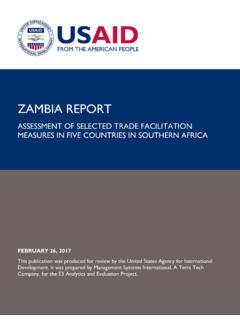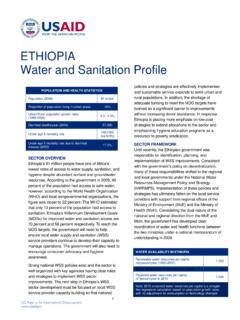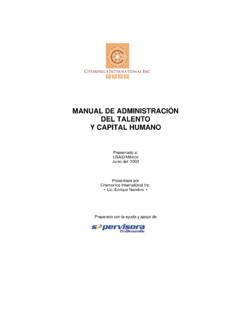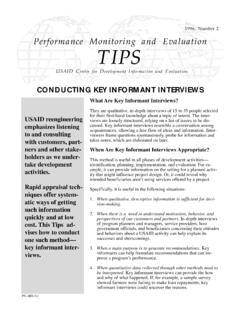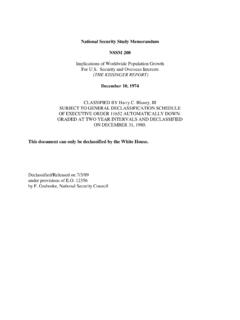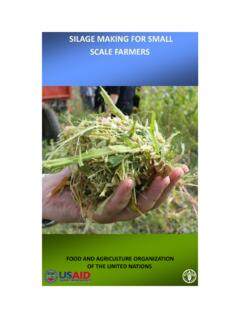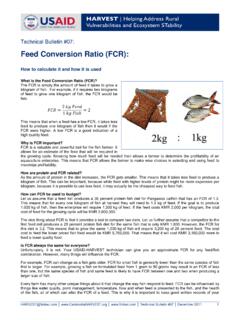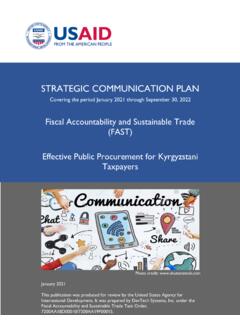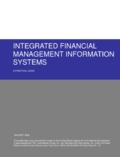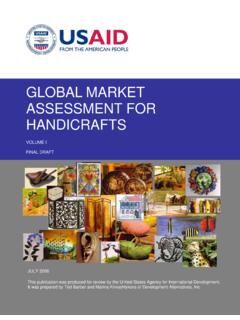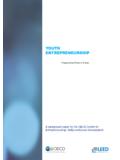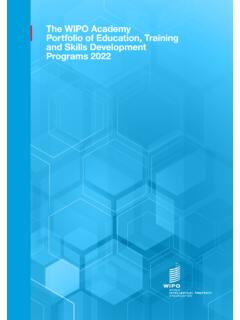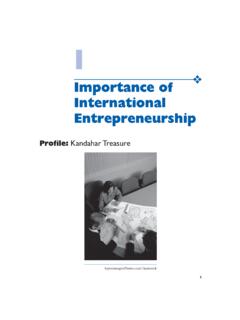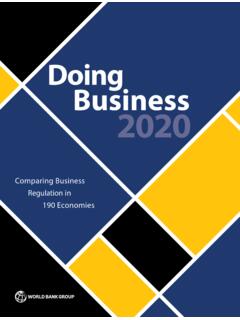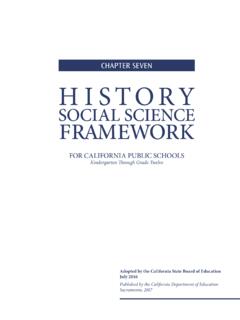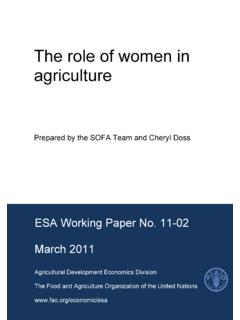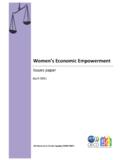Transcription of Corruption and Poverty - United States Agency for ...
1 Corruption and Poverty : A Review of Recent Literature Final Report Eric Chetwynd Frances Chetwynd Bertram Spector January 2003 Management Systems International 600 Water Street, SW Washington, DC 20024 USA 1 Table of Contents Executive 1 Defining Poverty and 2 Examining the Relationship Between Corruption and Economic Governance 3 2 List of Acronyms USAID US Agency for International Development GDP Gross Domestic Product PPP Purchasing Power Parity IMF International Monetary Fund BEEPS Business Environment and Enterprise Performance Survey ECA Europe and Central Asia TI Transparency International CPI Corruption Perceptions Index OECD Organization for Economic Cooperation and Development FSU Former Soviet Union LAC latin american and the Caribbean 3 Executive Summary A substantial number of recent studies have examined the relationship between Poverty and Corruption to clarify the ways in which these phenomena interact.
2 An understanding of this complex relationship can inform USAID planning and programming in democracy and governance, as well as in Poverty reduction strategies. Corruption in the public sector -- the misuse of public office for private gain -- is often viewed as exacerbating conditions of Poverty (low income, poor health and education status, vulnerability to shocks and other characteristics) in countries already struggling with the strains of economic growth and democratic transition. Alternatively, countries experiencing chronic Poverty are seen as natural breeding grounds for systemic Corruption due to social and income inequalities and perverse economic incentives. The literature points to the conclusion that Corruption , by itself, does not produce Poverty . Rather, Corruption has direct consequences on economic and governance factors, intermediaries that in turn produce Poverty .
3 Thus, the relationship examined by researchers is an indirect one. This paper discusses two major models explaining this moderated linkage between Corruption and Poverty : an economic model and a governance model. The Economic Model postulates that Corruption affects Poverty by first impacting economic growth factors, which, in turn, impact Poverty levels. Economic theory and empirical evidence both demonstrate that there is a direct causal link between Corruption and economic growth. Corruption impedes economic growth by discouraging foreign and domestic investment, taxing and dampening entrepreneurship, lowering the quality of public infrastructure, decreasing tax revenues, diverting public talent into rent-seeking, and distorting the composition of public expenditure. In addition to limiting economic growth, there is evidence that Corruption also exacerbates income inequality; regression analysis has shown a positive correlation between Corruption and income inequality.
4 Explanations for this link are that Corruption distorts the economy and the legal and policy frameworks allowing some to benefit more than others; there is unfair distribution of government resources and services; Corruption reduces the progressivity of the tax system; Corruption increases the inequality of factor ownership; and lower income households (and businesses) pay a higher proportion of their income in bribes than do middle or upper-income households. Economic growth and income inequality are important because they link Corruption to Poverty . studies show that the absence of economic growth (or negative growth) increases Poverty . Inversely, tests have shown that an increase in GDP produces an increase in the income of the poor. However, income distribution is an important mediating factor because economic growth may not always benefit the poor.
5 The Governance Model asserts that Corruption affects Poverty by influencing governance factors, which, in turn, impact Poverty levels. First, Corruption reduces governance capacity, that is, it weakens political institutions and citizen participation and leads to lower quality government services and infrastructure. The poor suffer disproportionately from reduced public services. When health and basic education expenditures are given lower priority, for example, in favor of capital intensive programs that offer more opportunities for high-level rent taking, lower income groups lose services on which they depend. Corruption is consistently correlated with higher school dropout rates and high levels of infant mortality. Secondly, impaired governance increases Poverty by restricting economic growth and, coming full circle, by its inability to control Corruption .
6 Thirdly, Corruption that reduces governance capacity also may inflict critical 4 collateral damage: reduced public trust in government institutions. As trust -- an important element of social capital -- declines, research has shown that vulnerability of the poor increases as their economic productivity is affected. When people perceive that the social system is untrustworthy and inequitable, their incentive to engage in productive economic activities declines. In conclusion, the literature reviewed in this paper demonstrates that Corruption does exacerbate and promote Poverty , but this pattern is complex and moderated by economic and governance factors. Based on these findings, anti- Corruption programs that are crafted to address issues of economic growth, income distribution, governance capacity, government services in health and education, and public trust in government are likely to not only reduce Corruption , but reduce Poverty as well.
7 5 Introduction Popular belief suggests that Corruption and Poverty are closely related in developing countries. Corruption in the public sector is often viewed as exacerbating conditions of Poverty in countries already struggling with the strains of economic growth and democratic transition. Alternatively, countries experiencing chronic Poverty are seen as natural breeding grounds for systemic Corruption due to social and income inequalities and perverse economic incentives. This report summarizes recent research on the relationship between Poverty and Corruption to clarify the ways in which these phenomena interact. This understanding can inform USAID planning and programming in democracy and governance, as well as in Poverty reduction strategies. The development literature is rich with theoretical insights on this relationship, many of them founded on practical experience and careful observation.
8 The World Bank s World Development Report for 2000/01: Attacking Poverty summarized current thinking on the Corruption - Poverty linkage as follows: The burden of petty Corruption falls disproportionately on poor people ..For those without money and connections, petty Corruption in public health or police services can have debilitating consequences. Corruption affects the lives of poor people through many other channels as well. It biases government spending away from socially valuable goods, such as education. It diverts public resources from infrastructure investments that could benefit poor people, such as health clinics, and tends to increase public spending on capital-intensive investments that offer more opportunities for kickbacks, such as defense contracts. It lowers the quality of infrastructure, since kickbacks are more lucrative on equipment purchases.
9 Corruption also undermines public service delivery (World Bank, 2001: 201). Many of these relationships have been examined using empirical research Much of this literature is recent -- from the mid-1990s -- when major international donor institutions began to focus attention on Corruption issues and researchers initiated cross-country measurement of the Corruption phenomenon. This report integrates this literature to present the major themes that are hypothesized and tested. This report is divided into three sections. The first section describes briefly how Poverty and Corruption are defined and measured in the literature. The second section presents the prominent themes that emerged from our review of the literature on Corruption and Poverty . Within this section, theoretical propositions are discussed, empirical research studies that support or refute them are described, and implications are drawn.
10 The third section summarizes the major themes uncovered in our review. 1 Defining Poverty and Corruption Poverty Poverty is a complex phenomenon. It is usually defined in relation to income, often measured in terms of per capita gross domestic product (GDP). Extreme Poverty is often defined as an income of less than $1 per person per day in terms of purchasing power parity (PPP).2 Some researchers define What is Poverty ? -Low income -Low education/health status -Vulnerability -Powerlessness 6 Poverty as the lowest income quintile in a referenced population. Critics argue that measuring Poverty in terms of GDP or PPP does not fully capture the phenomenon of Poverty . A broader definition treats Poverty as multidimensional, including (i) low income, (ii) low levels of education and health, (iii) vulnerability (to health or income loss, natural disaster, crime and violence, and education curtailment) and (iv) voicelessness and powerlessness (feeling discrimination, lacking income earning possibilities, mistreatment by state institutions, and lacking status under the law) (World Bank, 2001).
